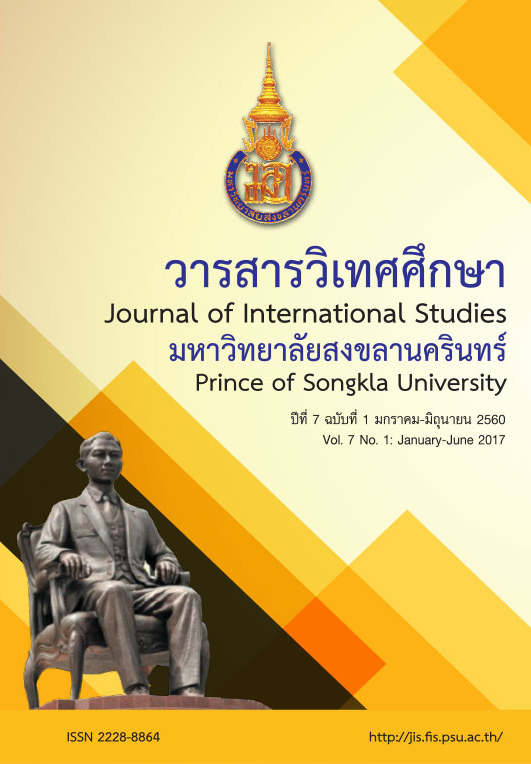Creativity Research Achievements in the Top Academic Journals for the Business Administration Research Field
Main Article Content
Abstract
This paper summarised research achievements relevant to creativity, focusing on those that have been published in the top journals in the field of business administration over the past years. The contents of this paper include the influence factors of individual creativity, theories and models of creativity, and creative climate and work environment, as well as creativity training. Knowledge of creativity can be considered an important tool used for an organisation to better understand the structure of a creative work environment and an influence mechanism for each creativity influence factor within an organisation. In this way, a firm can correctly facilitate developing the creativity levels of employees, resulting in the acquisition of a competitive advantage over other firms operating in the market.
Article Details
Statements and opinions expressed in articles herein are those of the authors and do not necessarily reflect the position of the editors or publisher.
Article, information, text, image, etc. which are published in Journal of International Studies, belong to Journal of International Studies. If anybody or any organization would like to use part or whole of them, they must receive written permission from Journal of International Studies before usage.
References
Amabile, T. M. & Conti, R. (1999). Changes in the work environment for creativity during downsizing. Academy of Management Journal. 42, 6. pp. 630-640.
Amabile, T. M., Conti, R., Coon, H., Lazenby, J. & Herron, M. (1996). Assessing the work environment for creativity. Academy of Management Journal. 39, 5, pp. 1154-1184.
Audia, P. G. & Goncalo, J. A. (2007). Past success and creativity over time: a study of inventors in the hard disk drive industry. Management Science. 53, 1, pp. 1-15.
Cattani, G. & Ferriani, S. (2008). A core/periphery perspective on individual creative performance: social networks and cinematic achievements in the Hollywood film industry. Organization Science. 19, 6, pp. 824-844.
Drazin, R., Glynn, M. A. & Kazanjian, R. (2000). Purpose-built theories: A reply to Ford. The academy of management review. 25, 2, pp. 285-287.
Drazin, R., Glynn, M. A. & Kazanjian, R. K. (1999). Multilevel theorizing about creativity in organizations: A sense making perspective. The academy of management review. 24, 2, pp. 286-307.
Elsbach, K. D. & Hargadon A. B. (2006). Enhancing creativity through “mindless” work: A framework of workday design. Organization science. 17, 4, pp. 470-483.
Ford, C. M. (1996). A theory of individual creative action in multiple social domains. The academy of management review. 21, 4, pp. 1112-1142.
Ford, C. M. (2000). Creative developments in creativity theory. The Academy of management review. 25, 2, pp. 284-287.
MacCrimmon, K. R. & Wagner, C. (1994). Stimulating ideas through creativity software. Management Science. 40, 11, pp. 1514-1532.
Oldham, G. R. & Cummings, A. (1996). Employee creativity: Personal and contextual factors at work. Academy of Management Journal. 39, 3, pp 607-634.
Scott, S. G. & Bruce, R. A. (1994). Determinants of innovative behavior: a path mode of individual innovation in the workplace. Academy of management journal. 37, 3, pp. 580-607.
Shalley, E. C., Gilson, L. L. & Blum, T. C. (2000). Matching creativity requirements and the work environment: Effects on satisfaction and intentions to leave. Academy of management journal. 43, 2, pp. 215-223.
Woodman, R. W., Sawyer, J.E. & Griffin, R. W. (1993). Toward a theory of organizational creativity. The academy of management reviews. 18, 2, pp. 293-321.
EF Education First Ltd. (2015). EF English Proficiency Index 2015. Retrieved December 22, 2015, from EF Education First (Thailand) Website: www.ef.co.th/epi/regions/asia/thailand/
Institute of Economic and Peace. (2015). Terrorism Index 2014. Retrieved December 22, 2015, from Vision of Humanity Website: http://www.visionofhumanity.org/#page/indexes/terrorismindex/2014/THA/OVER


